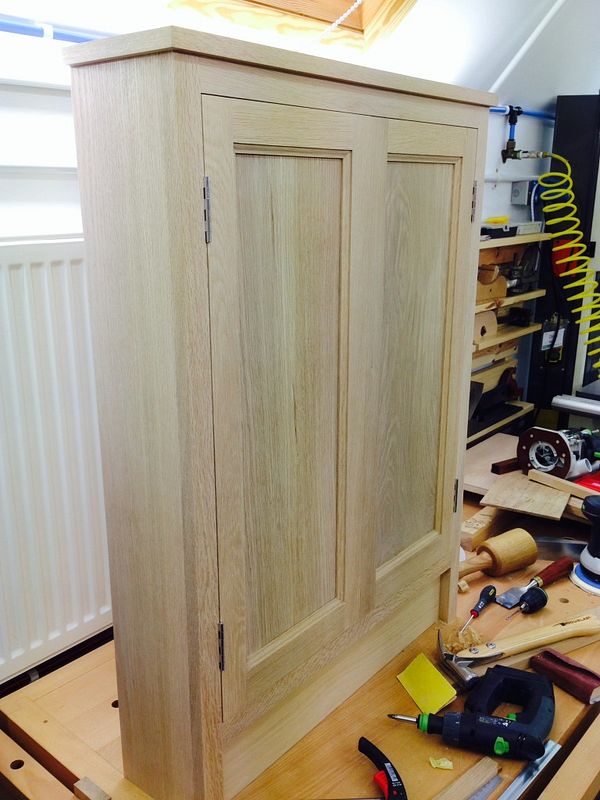What was I thinking?
View attachment 118479
Cut out of a very hard Mahogany but not sure what family it is, so hard it does not need a finish on it.
And in the background is a very old tree turned to stone.
That's amazing!

What was I thinking?
View attachment 118479
Cut out of a very hard Mahogany but not sure what family it is, so hard it does not need a finish on it.
And in the background is a very old tree turned to stone.
You’ll not like this one either then?sorry to say but that seems like a really really bad idea beautifully exicuted.
There are good reasons why every bandsaw I ever seen or heard of has guide blocks under the table, they allow sawdust to drop through the table and for it to drop away or for a little to accumulate on the blocks without effecting the cut.
What problems are they going to solve?

I'm sorry but you're never going to win any design awards with that skateboardLots of workshop sorting out at the mo. After figuring out how to sharpen the chisels, and picking up a couple of extra sizes, the morticer is now firmly in service. Not a full rebuild but broken down into parts, derusted, degreased, and desawdusted, and rebuilt. Works well, and will do 19mm mortices in oak without too much effort.
View attachment 118157








That’s lovely, nice shadow gaps.This fuse box cupboard.




You’ll not like this one either then?




If a workman makes pens well, is it good penmanship?
First major bit of work? That’s pretty damn good! Just would say that a toolrack in between might be what you have seen others do but I’m pretty sure you will find it gets in the way all the time, I would suggest that you replace it with a planing stop, much more useful. IanI've made myself a bench! And I can confirm doing so without one is a challange...
Southern yellow pine for most of it, oak dowel and wedges, nothern poplar vice block (I grabbed the first suitable size wood I had at hand). Bench can be knocked down into smaller parts that would fit in a car. Later on, I will make the piece for tools that will fit in the top gap, and I have some orders on the way to drill holes for dogs and holdfasts.
Bench will remain untreated, as I don't see this as a beauty furniture, but a functional jig, so I'm going for high friction, low looks.
It's pretty much my first major wood build, and I'm pretty happy with the results! Started my woodworking journey a year ago. Many lessons learnt.

Enter your email address to join: